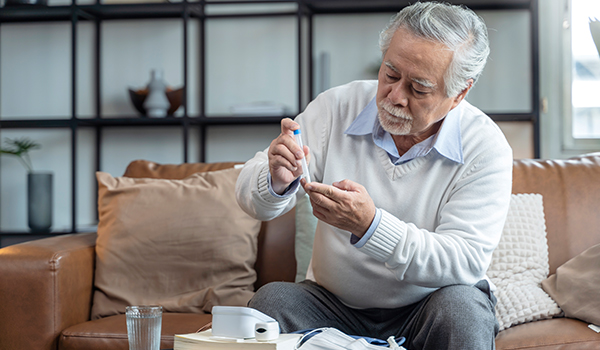The most difficult thing about having diabetes is having to take insulin shots on a regular basis in addition to adhering to a strict diet and monitoring their intake. Needless to say, nobody enjoys being poked, much less every time the body experiences a spike in blood sugar. As a result, a skin patch that delivers insulin to patients without the need for needles has been developed to manage diabetes.
With the development of an alternative therapeutic approach to control diabetes that uses a wearable skin patch to regulate blood sugar levels for people with type 2 diabetes, researchers at the National Institute of Biomedical Imaging and Bioengineering (NIBIB) of the National Institutes of Health (NIH) are beginning to see results in their efforts to make diabetes manageable for everyone.
One patch is sufficient to last for days or weeks at a time, but replacing the patch once its effects wear off is an easy process for managing diabetes. The patch is an innovative approach in delivery of insulin that makes use of a biochemical formula of mineralized compounds that interacts with the bloodstream to regulate blood sugar.
The skin patch is composed of a naturally occurring gum-like material called alginate that is taken from brown algae. This is combined with other insulin-stimulating agents and injected into the bloodstream via microneedles when insulin levels fall. This eliminates the need for the uncomfortable and painful daily injection ritual that is inevitable for all patients with chronic diabetes.
The alginate formula is made of a two drug compound called exendin-4 and glucose oxidase. The two compounds found in the patch then react with the blood chemistry to trigger insulin secretion. The addition of a phosphate mineral particle stabilizes the compound until it is needed in the blood stream.
Blood sugar levels that rise above a predetermined threshold react with the patch’s copper phosphate and glucose oxidase, creating a small amount of acidity that causes the calcium phosphate to release some exendin-4. As a result, insulin is released into the bloodstream, naturally regulating blood glucose levels. Unlike the previously developed patches, which could only release the chemical trigger continuously and not “only when required,” this insulin release method is responsive.
Once the sugar level in the blood drops to the healthy limit, the patch realizes it has to stop the release of exendin-4. This process is far superior to previously developed insulin patches and is referred to as responsive, or smart-release. In-depth research and testing would guarantee that the patch is suitable for everyday usage, such as permitting perspiration or showering.
Richard Leapman, Ph.D., NIBIB Scientific Director said in their official press release that this experimental approach could capitalize on the fact that people with type 2 diabetes can still produce some insulin. Leapman added that a weekly micro-needle patch would also lessen the need for frequent blood tests because it is “less complicated and painful” than the conventional insulin injection.
In tests on mice, a patch measuring half an inch square can hold enough medication for a week. The patch is stages of development and will be made ready for testing in humans soon. We can expect to buy them off counter shelves probably in another six months’ time, if all goes well and can be a permanent solution to staying off insulin injections.

